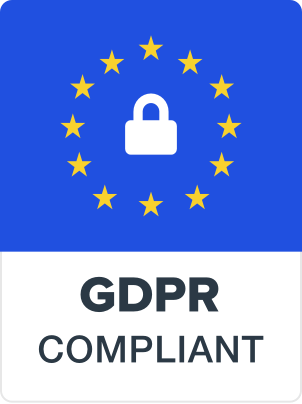How to Do Retail Audit and Checklist: An Ultimate Guide

May 23 , 2023
A solid retail execution strategy must be created and put into place if suppliers are to remain competitive in today’s market. The best way for a merchandiser to compile vital data from the field that affects the health of their company and its products is to employ retail management software. According to Statista, an expected increase to over 30 trillion dollars by 2024, the global retail market produced sales of over 26 trillion dollars in 2021.
By analyzing longitudinal data, business owners and managers can ascertain what works and what doesn’t in order to make better informed decisions and adjustments to their retail strategy. In this blog, we’ll go over everything you need to know about performing a retail audit and how to use the information you learn to make future business decisions that are better informed.
A Retail Audit: What Is It?
Retail management software are investigations of specific retail locations carried out by brand representatives or retail store staff with the goal of gathering information about the condition of the brand’s merchandise. For the purposes of this article, we’ll discuss retail audits pertaining to suppliers. Brand representatives gather various kinds of data, such as;
• Sales amount
• Stock standing Descriptions of promotional items and in-store displays
• Planogram compliance, Competitor activity
• Pricing
• Location of Products in Store
• Product harm
The Value of an Audit

Conducting retail digital audits has two advantages. On the one hand, they help suppliers monitor retailers’ adherence to previously made arrangements about product placement, pricing, and promotion. However, they also enable brands to accurately evaluate their performance in the retail industry.
The invaluable resource of data that audits provide is also advantageous, but the quality of your data depends on how you collected it. Managers can take appropriate actions that minimise inefficiencies and ultimately increase sales by taking the necessary measures to aggregate high-quality data from numerous retail locations over time and comparing results.
Process Steps In an Audit

How can your business ensure that it is carrying out retail digital audits correctly now that it is aware of their intrinsic value? Consider the following process to make sure your staff makes the most of each store visit.
1. Describe Your Objectives
Establish the primary goals for your retail audit. Do you consider how rapidly your goods are being pulled off the shelves? Specify in writing what you hope to gauge through the audit, and give each objective a numerical or qualitative value as a gauge of success.
2. Audit Criterion for Designs
Choose the precise audit questions you’ll pose and the allowed response categories. Will you ask “yes” or “no” questions, require written responses from the salespeople, or utilise a scale of 1 to 5? Don’t ask pointless inquiries; just those that will assist your business improve.
3. Make Reservations
It’s time to put the retail audit into action once you’ve determined what you hope to gain from it. When choosing which accounts to send to, try to be consistent. Individual salespeople can develop a relationship with store management and become incredibly informed about their stores in this fashion. Recognize that some retailers may desire advance notice before representatives visit their location. Remember to plan reps for the right amount of audits according to their designated territory.
4. Assemble Facts and Images

Make sure the data your salespeople gather directly relates to the objectives and standards you’ve established. If some retail survey questions are crucial to the goals of the organisation, it might make sense to classify them as “mandatory.” A fantastic method to show precisely what is happening in a business at any one time and to encourage accountability and compliance is to use images in audits. Review the data collection methods used by salespeople and think of ways to improve them, ideally with software.
5. Analyze the Outcomes
After digital audits are finished, arrange your data in a way that is simple to understand. Graphical representations of numerical data are possible, whereas tags for notes can be used to categorise them. Compare the outcomes you’ve obtained to your chosen KPIs to see how they compare.
6. Bring About Changes
After examining the results, take the necessary immediate action. For instance, you might see that a certain SKU is doing much worse than others across numerous locations and decide to remove it off the shelves right away. Alternately, you can make long-term business judgements once you’ve gathered data over a longer period of time.
7. Repetition Is Required

After carrying out multiple retail audits, you’ll be able to modify your retail audit procedure as necessary to suit the particular requirements of your business. Your business will be able to quickly adapt to the ongoing shift in the retail market by regularly conducting audits.
3 Different Types of Data

Make sure you and your team have the knowledge necessary to comprehend the information you will be gathering if you want to ensure the success of your retail auditing procedure. Three categories of retail execution data should be prioritised: sales, activity, and observational data.
• Observational data provides a picture of the circumstances your reps are seeing and reporting on inside the shop. This data includes the amount of inventory, the number of competitors, the level of competition, and more.
• The particular steps your team is doing in the field to enhance store execution are referred to as “activity data.” Understanding what and how these actions are affecting your sales depends on measuring and tracking them.
• Sales data is just the volume of each product sold over a specified time period at specific retail locations, which you are probably currently tracking. However, it acquires a new significance when combined with the observational and activity data collected by your staff, which enables you to determine which activities and shop settings result in the most sales.
Retail Audit Software Benefits

Before retail management software the traditionally has been conducted using pen and paper, which has a variety of avoidable drawbacks, including;
• After the fact, findings must be converted into a digital evidence capture
• Paper loss or damage risk Greater chance of human error
• Transmission of information from the field to decision-makers is delayed
Brands find it challenging to quickly replace orders, change their merchandising approach, or address retailer compliance issues as a result of these shortcomings in retail audit methodology. Your company’s unique requirements will determine the best software to use, although all programmes should have the following features;
• Easy Data Collection With Digital Evidence Capture
You should have the option to alter your survey questions to suit particular product families or shops. You should also customise the answer types that are permitted.
• Real-Time Data Synchronisation with Brand Managers
The main benefit of utilising a technical solution over a paper one is that it allows managers to obtain data from audits right away. Changes can be implemented more quickly the faster data is accessible for analysis. Choose a solution that easily converts data into graphs and charts for simple visualisation to further automate your process.
• Ability to Take Pictures
Images can convey ideas that words alone are unable to. They are particularly helpful for exposing information regarding the packaging, shelf presentation, shop cleanliness, and promotional displays of rival brands. Images are an excellent way to show situations “before” and “after.” The image of a shelf below was taken before it was merchandised and was used in a retail audit.
Additional Aspects That Provide Businesses an Advantage during Their Audit Process Include;
• Scanning a Barcode
Brand representatives can scan a product’s UPC with a smartphone camera to speed up the auditing process and provide more thorough product information on their screen. Reps can then respond to inquiries about a particular product or post notes about that SKU.
• Geotagging and/or Time Stamping
It’s useful to know the particular location and time of an audit for administrative purposes. You might see trends that emerge over a set period of time or at particular retailers.
• Capturing Of an Electronic Signature
Your business will be informed that the audit has been completed when you obtain a store manager’s signature. On the other hand, if a shop approves an audit, they cannot contest its conclusions.
Conclusion
You can assess the success of your whole retail execution strategy with the use of a retail audit. However, the value of the insights gleaned through retail audits depends largely on the calibre of the audits. Now, consider how your company might improve its retail audit process by organising the data collecting, analysis, and scheduling processes. Spend the time required analysing your results in order to make the auditing process useful and give your business the ability to make quick, educated decisions. If you are looking for retail management software for digital audit, get in touch with UrAudits.
Copyright © 2024 Uraudits.com. All Rights Reserved. Privacy Policy | Legal | Terms of Use
Privacy Overview
| Cookie | Duration | Description |
|---|---|---|
| cookielawinfo-checbox-analytics | 11 months | This cookie is set by GDPR Cookie Consent plugin. The cookie is used to store the user consent for the cookies in the category "Analytics". |
| cookielawinfo-checbox-functional | 11 months | The cookie is set by GDPR cookie consent to record the user consent for the cookies in the category "Functional". |
| cookielawinfo-checbox-others | 11 months | This cookie is set by GDPR Cookie Consent plugin. The cookie is used to store the user consent for the cookies in the category "Other. |
| cookielawinfo-checkbox-necessary | 11 months | This cookie is set by GDPR Cookie Consent plugin. The cookies is used to store the user consent for the cookies in the category "Necessary". |
| cookielawinfo-checkbox-performance | 11 months | This cookie is set by GDPR Cookie Consent plugin. The cookie is used to store the user consent for the cookies in the category "Performance". |
| viewed_cookie_policy | 11 months | The cookie is set by the GDPR Cookie Consent plugin and is used to store whether or not user has consented to the use of cookies. It does not store any personal data. |









